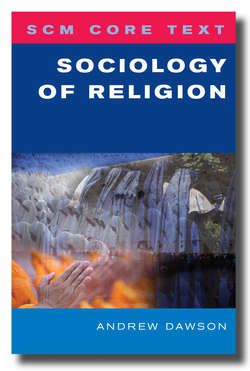Читать книгу SCM Core Text Sociology of Religion - Andrew Dawson - Страница 31
На сайте Литреса книга снята с продажи.
Mixed definitions
ОглавлениеSetting aside typical distinctions between substantive and functional definitions of religion, the reality is that most social scientists tend to work with a mixture of the two; albeit a mixture which, in most instances, tilts towards one typical extreme rather than another. This mixture of emphases is exemplified by what are, perhaps, two of the most quoted sociological definitions of religion – those of Karl Marx and Émile Durkheim. According to Marx:
Religious suffering is at the same time an expression of real suffering and a protest against real suffering. Religion is the sigh of the oppressed creature, the feeling of a heartless world, and the soul of soulless circumstances. It is the opium of the people. (McLellan, 1977, p. 63)
The substantive element in Marx’s definition resides in his understanding of religion as an outward manifestation (‘expression’) of an inner state of being. Be it the suffering of the proletariat or the satisfaction of the bourgeoisie, religion expresses the longings and preoccupations of the individual. At the same time, however, the inner state which religion expresses is, for Marx, a reflection of external processes which impact upon the self. Consequently, the externalization undertaken by religion inevitably involves the symbolic and practical representation of prevailing social forces and dynamics. In so being, the expressive dynamic of religion assumes a functional quality as its representation of internalized social forces in the form of religious symbols and rites serves, in effect, both to pacify the working classes (hence, ‘opium’) and reinforce the hand of those already in power. For Marx, religion functions as an inherently conservative force which underwrites existing (conflictual) social relations and prevailing (unequal) structures of power.
As will be seen in the next chapter, Durkheim shares Marx’s belief that religion expresses internal states of being whose ultimate origins lie in external social processes. In his most famous definition of religion, however, Durkheim chooses to emphasize other things. Religion, he says:
is a unified system of beliefs and practices relative to sacred things, that is to say, things set apart and surrounded by prohibitions – beliefs and practices that unite its adherents in a single moral community called a church. (2001, p. 46)
The substantive character of Durkheim’s definition rests in his identification of religion as a ‘system of beliefs and practices’ orientated to ‘things’ (material and immaterial) held to be ‘sacred’. Underlying the first part of this definition is Durkheim’s understanding of religion as a kind of classificatory system by which different kinds of objects, practices, values and beliefs are labelled and the most appropriate dispositions towards them identified. As with Marx, however, the functional nature of Durkheim’s understanding of religion eventually comes to the fore. Unlike Marx, though, the function which Durkheim holds religion to undertake is that of reinforcing social cohesion rather than underwriting social division. First and foremost, religion unites. Religion does so by generating among its followers a shared range of dispositions (attachment, obedience, awe) in respect of a given set of beliefs and practices. Taking the word religion at its most literal (from the Latin re-ligare, meaning ‘to bind’), Durkheim regards religion’s fundamental function as that of binding individuals together through its orchestration of their mutual association, common beliefs and shared practices. Importantly for Durkheim, and mediated through the ‘single moral community called a church’, the mutuality engendered by religion reinforces social cohesion and is thereby conducive to wider societal harmony.
